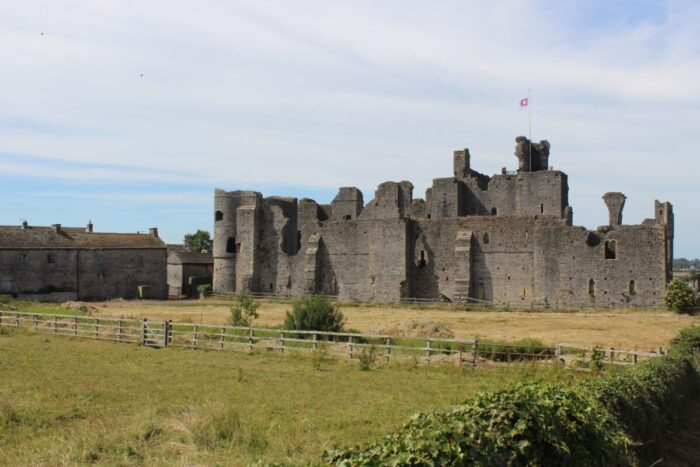Middleham Castles

Sunday 30 June
Depart: Parkinson Steps: 12.30
Arrive: Parkinson Steps: 19.30
Price: £48.00
This tour visits two castles on one site that at different times dominated this area of the Yorkshire landscape, overlooking the roads between the important towns of Richmond and Skipton. The earlier castle, ‘William’s Hill’, is the remnant of a Norman ringwork-and-bailey castle, built about 1086, and the later stone castle has connections with Richard III (r. 1483-1485), the last Plantagenet king of England. Both castles had their origins in land granted to the Norman lord, Alan Rufus (‘the Red’) of Brittany (a second cousin of William the Conqueror) who fought at Hastings in 1066. He helped stamp Norman authority on the area by leading the infamous ‘Harrying of the North’ during 1069-70, the savage suppression of a rebellion against the new Norman masters that led an estimated loss of over 150,000 lives. For his efforts, Alan was well rewarded: it has been estimated that when he died, at about the age of 53, in 1093 his fortune was worth over £144 billion (at 2023 prices).
The later stone castle, begun about 1170-80, grew into one of the largest in England. The size and scale of Middleham castle shows that it was well able to cater for noble and royal households of upwards of 200 members. During the 15th century the castle became the property of the Neville family and, for a while, the property of Richard III. In 1462, Richard, as the young Duke of Gloucester, had been placed in the household of his cousin Richard Neville, Earl of Warwick (‘the Kingmaker’) and was brought up at Middleham Castle for a short period of three years (1465-8), as well as at other Neville houses. Edward IV was held captive at the castle (1469) and, following Warwick’s death at the battle of Barnet in 1471, Edward IV gave Middleham to his brother, Richard, who had married Warwick’s daughter Anne Neville. Despite the short time he would have stayed here, it later became Richard’s principal seat in the North, and in about 1476 it was here that his one legitimate son, Prince Edward of Middleham, was born, allegedly in the castle’s ‘Prince’s Tower’. Prince Edward’s wet-nurse was one Isabel Burgh (who was later rewarded by Richard with a generous annuity from the revenues of Middleham) and an Anne Idley was appointed ‘Mistress of the Nursery’. Her late husband, Peter Idley, had written a book entitled Instructions to His Son. In 1484 the young Edward died at the castle and possibly lies buried in the local parish and collegiate church of St Mary and St Alkelda.
The excursion also includes short visits to two other interesting medieval gems. The first is the parish church of St. Nicholas West Tanfield, which contains a group of effigies, including the late 14th century double tomb of what are probably Sir John Marmion (d.1387?), in full armour of the period, and his wife, Elizabeth St. Quintin (d.1400). The two alabaster effigies are covered by a light free-standing wrought iron hearse of the same date, one of only two known to survive in the UK. The second, adjacent to the church, is a unique and well preserved embattled three-storey gatehouse known as the Marmion Tower. Apparently of early 15th-century date this belonged to the now lost manor house or castle of Tanfield.
This excursion will once again be led by Kelly DeVries, Professor of the Department of History, Loyola University, Maryland and Hon. Historical Consultant to the Royal Armouries and Robert C Woosnam-Savage, FSA, Curator Emeritus, Royal Armouries, and Visiting Researcher, University of Leeds.
Sensible footwear is recommended, as there will be a significant amount of walking on uneven surfaces and climbing steep stone steps. It would also be advisable to bring both raincoats and sunblock.
For further information about Middleham Castle, please visit http://www.english-heritage.org.uk/visit/places/middleham-castle/
This excursion is organised in association with Royal Armouries
